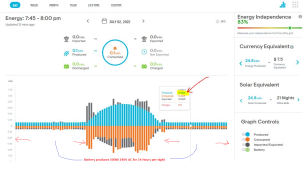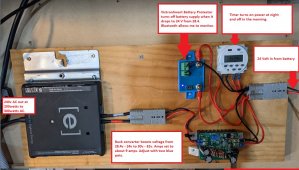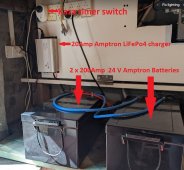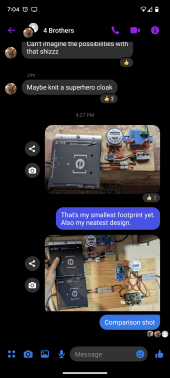I wouldn't do it! (but I think there is a solution...)
In the best case, the MPPT algorithm of the microinverter would never lock, and output would fluctuate.
In the worst case it would simply fry your microinverter and/or ruin your batteries.
There are some grid-tie inverters that are actually designed for this (like the SUN 2000W) , but I don't know of any microinverters that have this feature.
What the MPPT algorithm is looking for is a maximum power point. With batteries, the maximum power point is theoretically infinite.
But, maybe you can use one if these DC-DC boost converters in betweenyour batteries and the microinverter, which has a current limiting function.
For example, lets say you set your DC-DC converter to a maximum of 15 amps and 36v. If the microinverter will try to pull more than 15amps, the DC-DC will lower the voltage accordingly. The MPPT should then understand that it went too far with the current and slowly bring it down.
All this is in theory, I haven't tried it, but I did play with some of these DC-DC boost converters. They are pretty nice and cheap, but a bit if a pain to setup (using pots to set voltage and maximum current).
I would suggest you get one and experiment slowly. I would set the maximum voltage a bit less than your microinverter's maximum voltage, and the amps at almost the maximum the microinverters can handle.
But make sure that this is inline with your batteries abilities and your wiring guage.
If you set it properly, it should protect your batteries a bit, but still I would add proper fusing just in case.
There are different versions of these cheap DC-DC boost converters, but I would get the 1800w one, just because it has a temperature controlled fan, and its beefier.
These guys generate heat at high loads, so make sure to keep them indoors and properly ventilated.
Smarter Shopping, Better Living! Aliexpress.com

www.aliexpress.com
Good luck... and stay safe.












